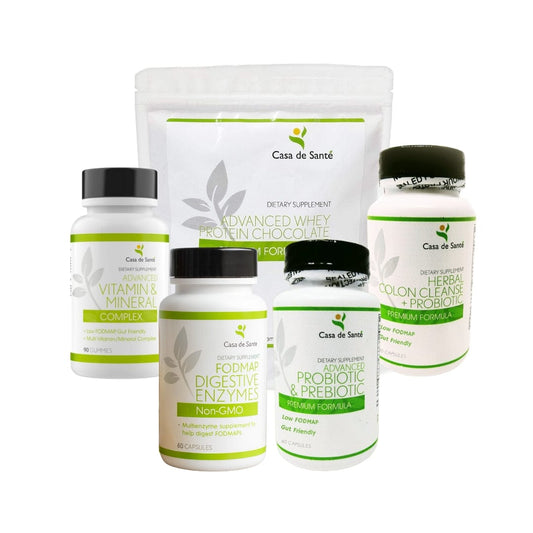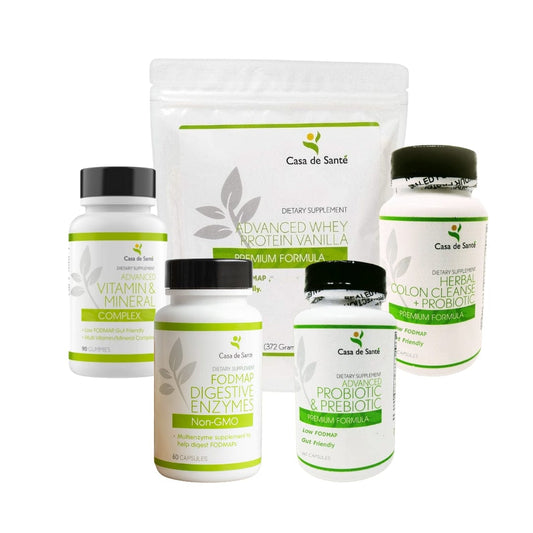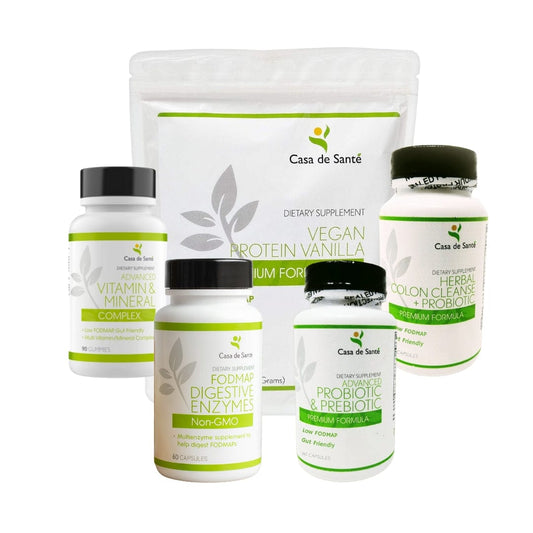The Best Fiber Supplements to Take While on Semaglutide: A Comprehensive Guide
If you've recently started semaglutide (Ozempic, Wegovy, or Rybelsus) for weight management or diabetes, you may be experiencing some digestive changes. These GLP-1 medications slow gastric emptying, which can lead to constipation and other digestive issues. Adding the right fiber supplement to your daily routine can make a significant difference in your comfort and overall treatment experience.
fiber supplements aren't just a band-aid solution—they're an essential component of digestive health that becomes even more important when taking semaglutide. The right supplement can help maintain regularity, reduce uncomfortable side effects, and support your overall health goals while on this medication.
Why Fiber Matters When Taking Semaglutide
Semaglutide works by mimicking a hormone called GLP-1, which helps regulate blood sugar and appetite. However, it also slows down the movement of food through your digestive system—a mechanism that helps you feel fuller longer but can lead to constipation, bloating, and discomfort for many users.
Adequate fiber intake becomes crucial when taking semaglutide because it adds bulk to your stool and helps maintain regular bowel movements despite the medication's slowing effect on digestion. Additionally, fiber can help manage blood sugar levels, which complements semaglutide's primary function for those with diabetes.
Common Digestive Side Effects of Semaglutide
Many patients report constipation as one of the most challenging side effects of semaglutide. This occurs because the medication delays gastric emptying, allowing more water to be absorbed from stool, resulting in harder, drier bowel movements that are difficult to pass. Other digestive side effects may include nausea, bloating, and occasional diarrhea.
These side effects are often most pronounced during the initial weeks of treatment or after dose increases. While some patients find these symptoms subside over time, others need ongoing management strategies—and fiber supplements are at the top of that list.
It's worth noting that the severity of digestive side effects can vary significantly between individuals. Some patients may experience only mild discomfort, while others report more substantial issues that interfere with daily activities. Factors such as pre-existing digestive conditions, overall diet quality, hydration levels, and physical activity can all influence how prominently these side effects manifest. Healthcare providers typically recommend starting at the lowest dose of semaglutide and gradually increasing it to allow the body time to adjust, which can help minimize digestive disturbances.
How Fiber Helps Counteract These Effects
Dietary fiber works in two primary ways: soluble fiber dissolves in water to form a gel-like substance that slows digestion, while insoluble fiber adds bulk to stool and helps it pass more quickly through the digestive system. When taking semaglutide, a balanced approach to both types of fiber can help normalize bowel function.
Soluble fiber can help manage the occasional diarrhea some patients experience, while insoluble fiber is particularly helpful for the more common constipation issues. The right fiber supplement can provide this balance while being gentle enough for a digestive system already adjusting to medication.
Beyond just addressing constipation, fiber offers additional benefits that are particularly valuable for semaglutide users. The fermentation of fiber in the gut produces short-chain fatty acids that nourish the colon cells and support a healthy gut microbiome. This is especially important since some research suggests that GLP-1 medications may alter gut bacteria composition. Furthermore, fiber's ability to slow the absorption of sugars helps prevent blood glucose spikes after meals, working synergistically with semaglutide to improve glycemic control. For those using semaglutide for weight management, fiber-rich foods also promote satiety, potentially enhancing the medication's appetite-suppressing effects without adding significant calories.
Top Fiber Supplements for Semaglutide Users
Not all fiber supplements are created equal, and some work better than others when paired with semaglutide. Here are the top options based on effectiveness, tolerability, and compatibility with this medication.
Psyllium Husk (Metamucil, Konsyl)
Psyllium husk is often considered the gold standard of fiber supplements for semaglutide users. It contains both soluble and insoluble fiber, making it versatile for different digestive issues. The soluble fiber in psyllium forms a gel in the digestive tract, which helps soften stool and make it easier to pass—directly counteracting semaglutide's constipating effects.
Products like Metamucil and Konsyl offer psyllium in various forms, including powders, capsules, and chewable tablets. The powder forms are typically most effective but require adequate water intake. Start with a small dose (about half the recommended amount) and gradually increase to avoid bloating or gas, which can be particularly uncomfortable when already taking semaglutide.
Methylcellulose (Citrucel)
Methylcellulose is a non-fermentable soluble fiber that's less likely to cause gas and bloating than some other options. This makes it an excellent choice for semaglutide users who find their digestive systems are more sensitive since starting the medication.
Citrucel is the most common methylcellulose supplement on the market. It works by absorbing water to form a gel that softens stool and increases bulk. Unlike some fiber supplements, methylcellulose doesn't ferment in the colon, which means less gas production—a significant benefit for those already experiencing digestive discomfort from semaglutide.
Calcium Polycarbophil (FiberCon)
Calcium polycarbophil is a synthetic fiber that can absorb many times its weight in water. This property makes it effective for both constipation and diarrhea—a versatility that's helpful since some semaglutide users experience alternating digestive issues.
Products like FiberCon provide this fiber in tablet form, which some patients find more convenient than powders. The tablets must be taken with plenty of water to be effective. Calcium polycarbophil is generally well-tolerated and produces minimal gas, making it suitable for sensitive digestive systems adjusting to semaglutide.
Natural Fiber Supplements to Consider
For those preferring more natural options, several plant-based fiber supplements can be effective while taking semaglutide. These options often provide additional health benefits beyond regularity.
Acacia Fiber
Acacia fiber (also called acacia gum or gum arabic) is a prebiotic soluble fiber derived from the sap of Acacia senegal trees. It dissolves completely in water without the thick, gel-like consistency of psyllium, making it easier to consume for many people.
What makes acacia fiber particularly suitable for semaglutide users is its gentle action and minimal side effects. It ferments more slowly than some other fibers, resulting in less gas and bloating—symptoms that can be exacerbated when taking GLP-1 medications. Brands like Heather's Tummy Fiber offer pure acacia fiber supplements specifically designed for sensitive digestive systems.
Ground Flaxseed
Ground flaxseed provides both soluble and insoluble fiber along with beneficial omega-3 fatty acids. The combination of these nutrients can help maintain digestive regularity while also supporting heart health—an important consideration for many diabetes patients on semaglutide.
Unlike processed fiber supplements, ground flaxseed is a whole food that provides additional micronutrients. It can be purchased pre-ground or ground at home (whole seeds pass through the digestive system unabsorbed). Start with one tablespoon daily mixed into foods like yogurt, oatmeal, or smoothies, and gradually increase to 2-3 tablespoons as tolerated.
How to Incorporate Fiber Supplements Effectively
Taking fiber supplements while on semaglutide requires some strategy to maximize benefits and minimize discomfort. The right approach can make a significant difference in your experience.
Timing Your Fiber Intake
When taking semaglutide, the timing of your fiber supplement matters. Generally, it's best to separate fiber supplements from medication by at least two hours to prevent any potential interference with absorption. Many patients find taking fiber supplements in the evening helps maintain morning regularity.
If you're experiencing nausea from semaglutide (common in the first few weeks), taking fiber with a small amount of food rather than on an empty stomach can help prevent additional digestive discomfort. Consistency in timing is also important—taking your supplement at the same time each day helps establish a regular digestive pattern.
Starting Slowly and Building Up
One of the most common mistakes people make with fiber supplements is starting with too high a dose. This is especially problematic when taking semaglutide, as your digestive system is already adjusting to medication changes.
Begin with about one-third to one-half of the recommended dose on the product packaging. Maintain this lower dose for 3-5 days before gradually increasing. This slow approach gives your digestive bacteria time to adjust and minimizes side effects like bloating or gas. Some patients may need 2-3 weeks to work up to a full dose comfortably.
Hydration Is Essential
Adequate water intake is critical when taking fiber supplements, and even more so when on semaglutide. Without sufficient fluid, fiber can actually worsen constipation by creating a dry, bulky mass that's difficult to pass.
Aim to drink at least 8 ounces of water with each dose of fiber and increase your overall daily fluid intake to at least 64 ounces. This hydration helps the fiber work effectively and can also help manage other semaglutide side effects like dry mouth and headaches.
When to Consult Your Healthcare Provider
While fiber supplements are generally safe to add to your regimen, there are situations where medical guidance is necessary, especially when taking prescription medications like semaglutide.
Signs That Your Approach Needs Adjustment
If you experience increased abdominal pain, severe bloating, or changes in your bowel habits that don't improve after 1-2 weeks of fiber supplementation, it's time to consult your healthcare provider. These symptoms could indicate that your current fiber choice or dosage isn't appropriate for your specific situation.
Similarly, if you develop new symptoms like nausea that worsens after taking fiber, or if you notice any changes in how well your semaglutide seems to be working, speak with your healthcare team. They may recommend adjusting your fiber type, dose, or timing to better complement your medication.
Remember that finding the right fiber supplement while on semaglutide may require some trial and error. What works perfectly for one person might not be ideal for another. The goal is to find a sustainable approach that supports your digestive health while allowing you to continue benefiting from your semaglutide treatment with minimal side effects.
With the right fiber supplement and proper implementation, you can significantly improve your comfort and quality of life while taking semaglutide, making your weight management or diabetes treatment journey much more sustainable in the long term.

















